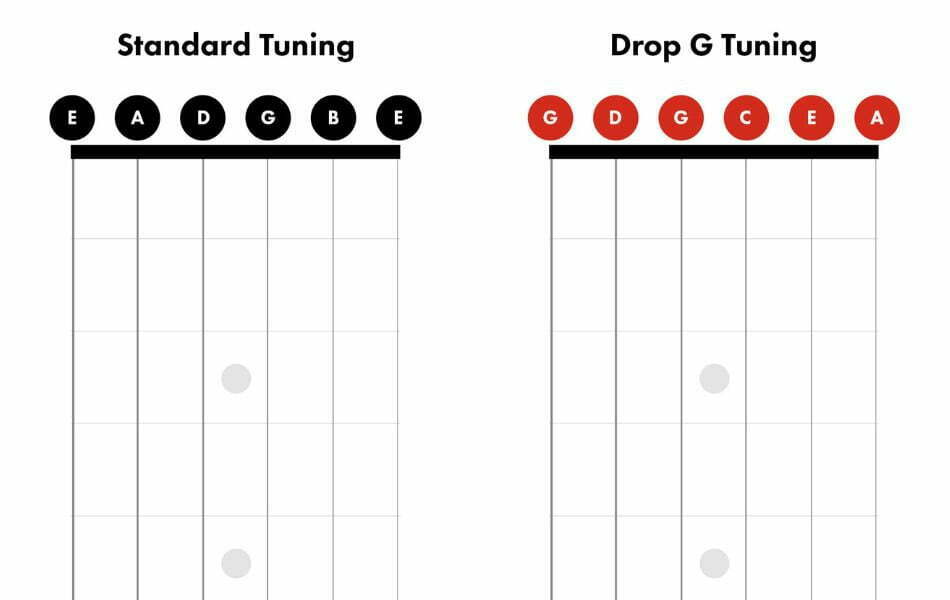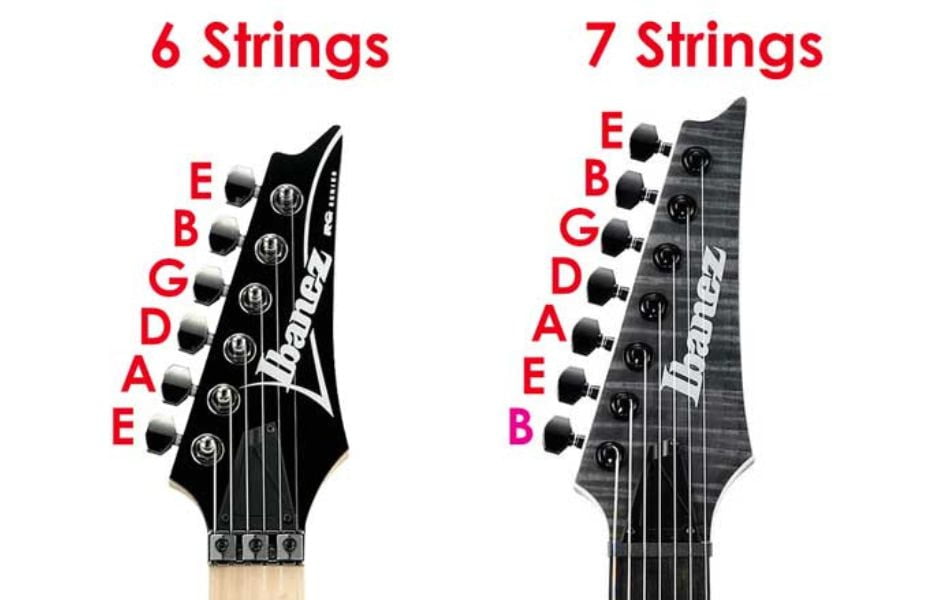Drop G Guitar Tuning: Unveiling The Hidden Gem
As you continue your musical journey, you might seek ways to find easier ways to play chords or to experiment with different sounds. Exploring alternate tunings can offer a fantastic avenue for achieving precisely that! Among the array of choices, Drop G guitar tuning emerges as a compelling option that you should consider. Let's delve into the world of Drop G tuning and unlock its creative potential!
Overview of drop G guitar tuning
Drop G guitar tuning is a distinctive guitar tuning that centers around altering the lowest-pitched string, often the sixth string, from its standard E tuning to a G note. This tuning brings about a unique sonic landscape, typically characterized by its heavy and lower-pitched sound. The sequence of notes for Drop G tuning is G-D-G-C-F-A, deviating from the traditional E-A-D-G-B-E arrangement.
The primary objective behind adopting drop G tuning is to generate a tone that resonates with weightiness and depth. This sonic quality is particularly well-suited for musical genres like heavy metal, where a darker and more aggressive auditory profile is sought after.
By transitioning the lowest string to a G pitch, musicians unlock the ability to craft power chords with a single finger pressed across the entirety of the string. This, in turn, simplifies the execution of massive and dissonant-sounding riffs that are a hallmark of the heavy metal genre.
Drop G tuning offers a novel way for guitarists to explore their instrument's sonic boundaries and to experiment with creating moodier and more impactful compositions. This unique tuning opens up new avenues for creative expression, allowing musicians to craft musical landscapes that are both intense and evocative.
Whether you're after the bone-rattling resonance of heavy metal or the emotive depth of other musical genres, Drop G tuning has the potential to be an indispensable tool in your musical toolkit.

How to tune drop G guitar
Drop G tuning 6-string guitar
Dropping your 6-string guitar to G tuning involves adjusting the string pitches to achieve the desired sound. Here's a step-by-step guide on how to achieve Drop G guitar tuning:
In standard tuning, the strings are usually tuned from low to high: E-A-D-G-B-E. The lowest string is tuned to E. To begin, you need to loosen the tension of each string. You can do this by turning the tuning pegs counterclockwise. This will lower the pitch of each string.
- Start with the lowest string, which is typically the 6th string. Tune it down to a G note.
- Tune the 5th string (A) down to G.
- Tune the 4th string (D) down to C
- Tune the 3rd string (G) down to F
- Keep the 2nd string (B) and the 1st string (high E) in their standard tuning
Drop G tuning 7-string
Basically, a drop g guitar tuning with 7 strings is quite similar to a 6-string guitar. Since there is an additional 7th string, the increase of the string is slightly different.
The standard tuning for a seven-string guitar encompasses a familiar arrangement of notes, beginning with the lowest string tuned to B, followed by E, A, D, G, B, and culminating with the highest string tuned to E.
The strings on a 7-string guitar retain the same sequence as the standard tuning on a 6-string guitar, yet in this instance, an additional string is introduced. This novel string, situated at the lowest point, is tuned to the low B note. Subsequently, the second lowest string is attuned to the low E pitch.
Despite its almost identical string order to a six-string guitar, the drop G guitar tuning applied to a seven-string guitar boasts a few distinct variations. When adopting drop G tuning on a seven-string guitar, the sequence is as follows:
- G (lowest string)
- D
- G
- C
- F
- A
- D (highest string)
This particular tuning facilitates a profound resonance, lending itself well to genres demanding a heavier and more intense sonic presence. By embracing the drop G tuning on a seven-string guitar, musicians can harness a distinctive tonal palette to elevate their musical expression to new heights.

Drop G guitar tuning holds the promise of an exciting and rewarding musical journey. Embracing drop G tuning in your practice routine presents a golden opportunity to broaden your guitar skill set. With this alternate tuning, you'll seamlessly integrate fresh sounds, tones, and even explore diverse genres that were previously uncharted territories.







